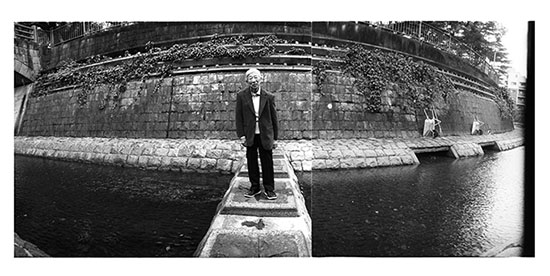
“I thought the bomb was dropped right next to me. But actually the bomb was detonated 2,800 meters (almost 2 miles) away.” -Takeshi Minekawa
I recently received the sad news that Mr. Takeshi Minekawa passed away on January 5th, 2024. He was 87 years old. I photographed him near the hypocenter where the atomic bomb detonated over Nagasaki. This portrait has only been shown at the From Above exhibition in 2018. I took the photograph nearly a decade after I began photographing hibakusha, atomic bomb survivors.
Mr. Minekawa was nine years old when the atomic bomb exploded. He was with his parents when the plane carrying the “Fat Boy” atomic bomb flew over Nagasaki. They went outside to look when the air raid siren sounded and were overwhelmed by the enormous boom, flash of light, wind, and heat immediately after the explosion.
This portrait is part of my project From Above, which is a collection of portraits and reminiscences of atomic bomb survivors and firebombing survivors from Dresden, Tokyo, Coventry, Rotterdam, and Wielun. From Above is permanently exhibited at the Nagasaki Peace Memorial Hall for Atomic Bomb Victims. It has also been exhibited internationally in museums, exhibition spaces, and at the United Nations. From Above was released as a limited edition book that was sold at PhotoEye.com. It is sold out, but I have the last copies. Contact me if you’re interested.
